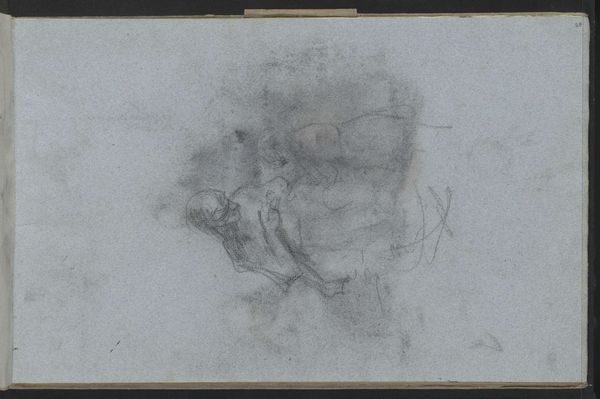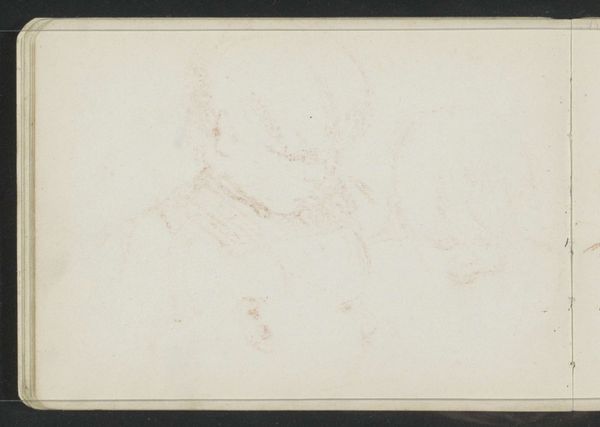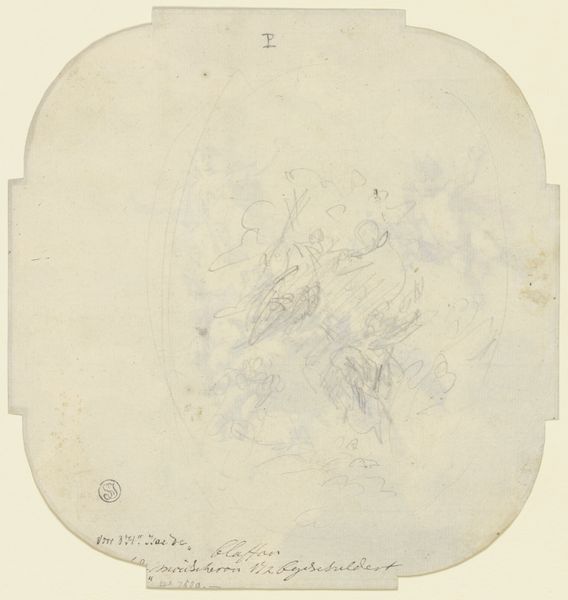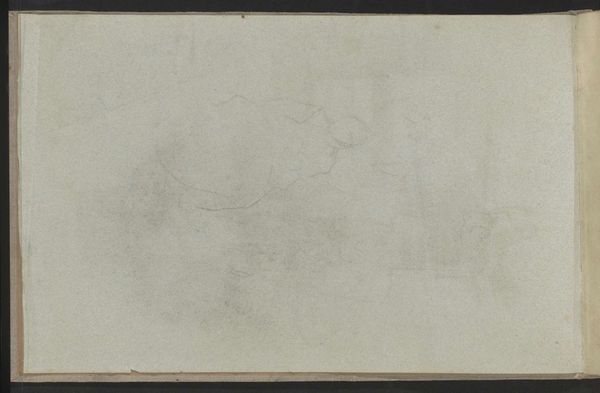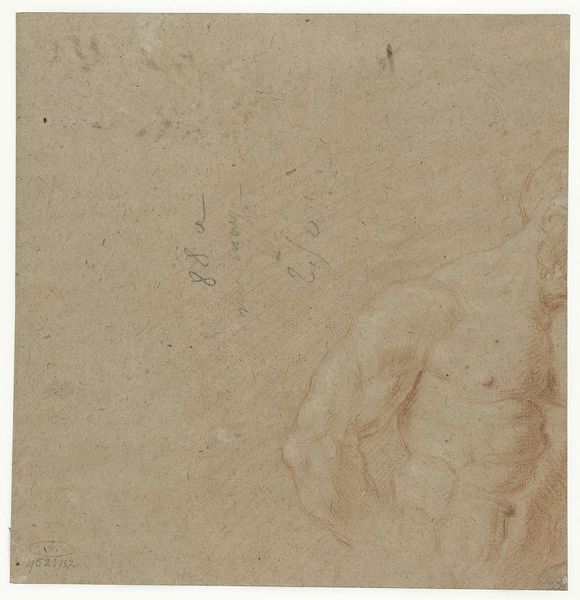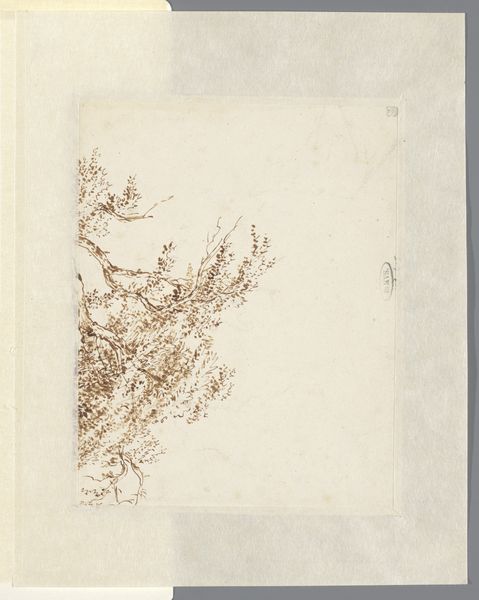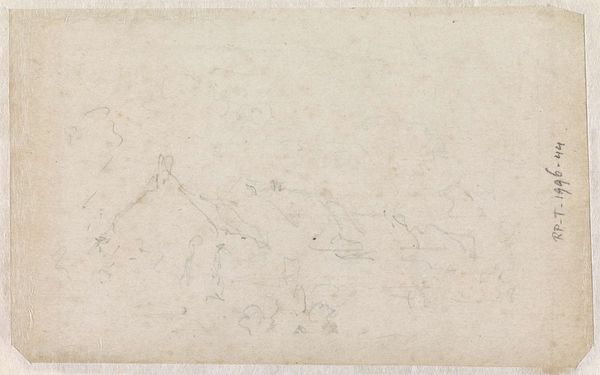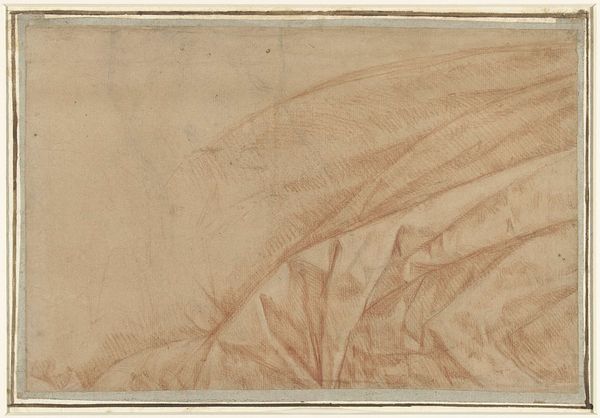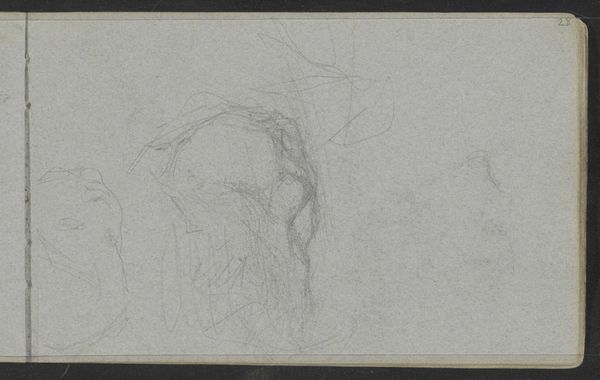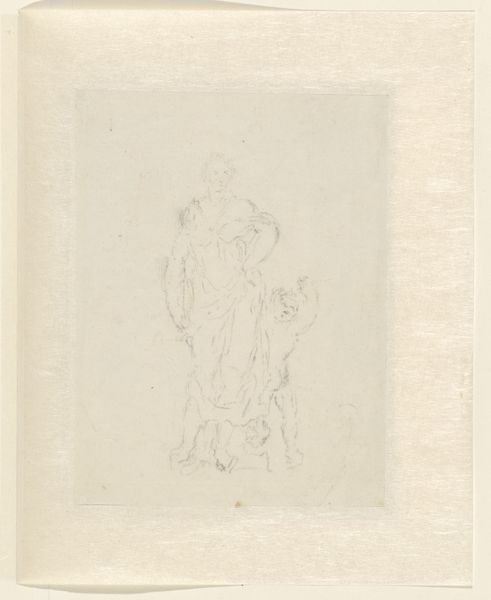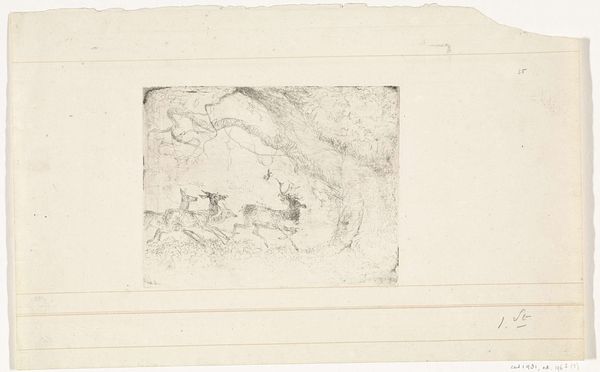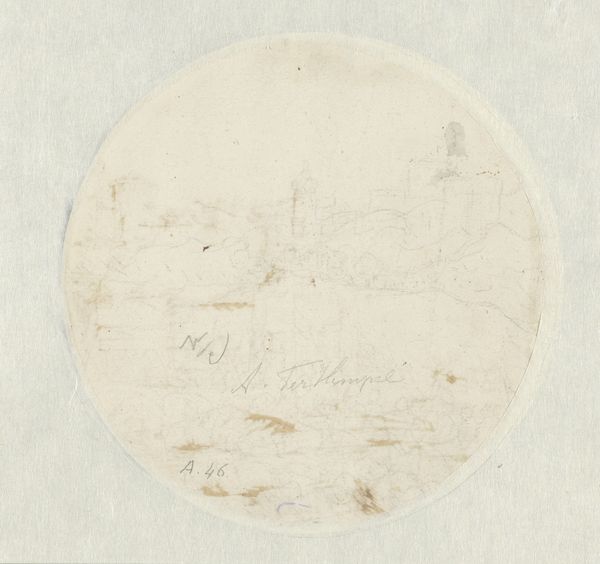
Dimensions: height 181 mm, width 194 mm
Copyright: Rijks Museum: Open Domain
Curator: We’re looking at "Landschap met ruïnes en een boom" – "Landscape with ruins and a tree" – a pencil sketch by Jean Jacques de Boissieu, likely created sometime between 1746 and 1810. Editor: My first impression is of quiet desolation. The drawing, enclosed within that circular frame, feels intimate yet incredibly lonely. The wispy tree, the vague forms... it's like a half-remembered dream. Curator: It’s typical of Boissieu’s romantic explorations. These artists grappled with complex notions of history, memory, and the sublime, and how nature reclaims spaces previously occupied by humans. He was particularly invested in line etching as a medium during a time of intense societal change. Editor: The ruined structures imply past civilizations, hierarchies perhaps? But nature, represented by that tenacious, skeletal tree, is persistent, pushing through societal collapses. It speaks to cycles of power and fragility in human constructions. How does this piece challenge or conform to established power structures and socio-political narratives? Curator: Absolutely. The focus shifts away from celebrating civic pride or architectural grandeur, and instead contemplates transience, the ebb and flow of time on human endeavor. The art world increasingly showcased scenes from ordinary life while turning away from religious and aristocratic patronage in this period. These artists often expressed concern for ecological and societal imbalances. Editor: The ruins themselves are rendered so faintly – it’s less a clear record and more a feeling of loss and change. It prompts reflections about progress, colonialism, and its inherent disruptions. It questions whose stories are elevated in official records versus the subtle resistance encoded into images such as this one. Curator: It's fascinating how even in a seemingly straightforward landscape, Boissieu encodes these nuanced observations about time, decay, and nature’s quiet triumph, reflecting growing secular and liberal sensibilities. It is really a meditation on history's impermanence. Editor: Ultimately, it reminds us of our fleeting presence within broader systems of nature and time, compelling us to examine whose voices are consistently erased in our understanding of historical narratives.
Comments
No comments
Be the first to comment and join the conversation on the ultimate creative platform.
